Adrian Collins's Blog, page 129
August 2, 2022
Why I am Watching House of the Dragon
To quote another story about a dysfunctional family of great influence, “Just when I think I’m out, they pull me back in!” I watched the extended Comic-Con trailer for House of the Dragon, and it was like all the old feelings I’d suppressed from my days as a Game of Thrones superfan came running back.
We’d broken up for good reasons. Season Eight was a dark period in our relationship but let’s be honest, it hadn’t been good between us in a while. Things had been treading water for a while with massive changes from the books like the excision of Young Griff, Sansa being given Jeyne Poole’s role as Ramsey’s torture victim, and the Martells going from my favorite characters in the novels to people I just wanted annihilated. The Sparrow Plot was a meditation on the power of the people, and it was turned into another attack on religion. Tyrion lost his dark turn after murdering his father. We could be here all day.
There’s also the fact I wasn’t exactly in a great place with George R.R. Martin himself. I love the song “George R.R. Martin is not your bitch.” I’m a writer myself. Sometimes the creative juices don’t flow or flow in different directions. I even told myself that I didn’t care if he finishes the books because what he’d given us in unfinished form was worth it for the experience. I told myself this, but I was lying. I gave my wife copies of the first four books when we were dating, and we’ve celebrated our twelfth wedding anniversary.
But I’m sold. The sight of the trailer combined with all the little tidbits and characters I recognized from Fire and Blood, transported me back to the time when I was ready to join Daenerys in her purge of slavers as well as when the Others still had menace. However, you may want to know the reason for my insanity, so I thought I’d share.
1: Nobody does it betterGame of Thrones has had many imitators since it went off the air. However, none of them have managed to capture my interest the way HBO’s adaptation of the books has. I was one of the people who liked the Wheel of Time by Amazon but even I wasn’t blind to the flaws. The Witcher comes closest but they’re fundamentally different kind of stories. No, HBO and Martin developed a ten-year relationship that was like nothing on television and still remains unique. The politics, magic, intrigue, characterization, and, yes, sexiness was all a delightful cocktail that you can only get one place.
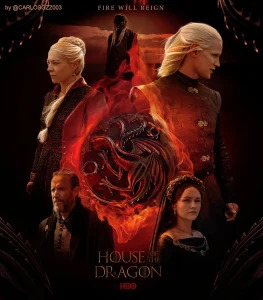 2: Weiss and Benioff aren’t involved
2: Weiss and Benioff aren’t involvedIt probably seems ungrateful to those two to specifically cite their lack of involvement as a reason for why I’m willing to give another chance, but a lot of behind-the-scenes material has made me think the show’s biggest flaws were their architecture. The pair sprung the idea that Game of Thrones should be five seasons and theatrically released movies (which HBO, a cable company, wasn’t keen on) on their producers right as they were finishing season four. They were eager to move on and unwilling to have other people carry the show beyond them. Apparently, also immune to any form of criticism and prone to doubling down. There’s a deleted scene, for example, where Arya watches a play where they simulate Sansa’s assault by Ramsay Bolton. One of the audience complains and another tells them not to watch if they’re so annoyed by it.
3: It’s completeFire and Blood will not be for everyone because it is a work of cryptohistory rather than novels, but George R.R. Martin has it all plotted out for us. The cast of vivid characters, sex, violence, blackmail, bastards, and dragons is all there. While I hate to say I’m utterly spoiled, I kind of am and know how this tragedy is going to play out the same way I would if I went to see Hamlet or Revenge of the Sith again. For better or worse, I know how the story is going to go and will be giggling like the Red Wedding when my wife speculates on the civil war she’s predicting between Daemon and his niece Rhaenyra.
4: The cast looks incredibleIt’s not Doctor Who that I’m looking to for Matt Smith’s performance but his role as Prince Phillip in the Crown, but I think he’ll bring a massive amount of talent to the role. The fact we’re going to be seeing young actors in the role of Rhaenyra and Alicent before skipping ahead a couple of decades also tells me that they’re going to get all the nuances of this. Emma D’arcy is bringing a lot of chops, and I’m even happy to see Olivia Cooke escape from Ready Player One. But when I say looks incredible, I mean the LOOK is incredible. Everything I’ve seen of their characters is fantastic, and we’re a long way from the t-shirts of Shanarra.
5: DragonsI’m a simple man. I see a dragon, I smile. I hear the show is going to have sixteen characterized dragons and dragon fights, I am sold. Will I ever see a live-action Dragonlance in my lifetime? Probably not. Will I take this instead? Yes.
Would I watch anything BUT this? None of the other spin-offs appeal to me because they’re not pure Martin. Snow? I’ll watch it but not with the same enthusiasm. Dunk and Egg? OH, HELL YES. But this? This will be my jam, I’m sure.
To learn more about the new series, click here.
The post Why I am Watching House of the Dragon appeared first on Grimdark Magazine.
August 1, 2022
REVIEW: All The Seas of The World by Guy Gavriel Kay
All The Seas of The World, the third book in a loose trilogy by Guy Gavriel Kay, takes place in a pre-renaissance country much like Italy. There are a small number of fantasy elements, such as the mysterious telepathy shared between two characters and an old pagan-like god that resides in an ancient forest. Yet, these elements are very small in comparison to the rest of the story. The book revels instead in its characters, themes, and the world itself rather than common fantasy tropes. This sets it apart from much of the genre, and if you care more about world-building, prose, and character development, then this may be the novel for you.
“There were mysteries everywhere. That was all right. You didn’t need to solve them all. Only the ones that affected you”.
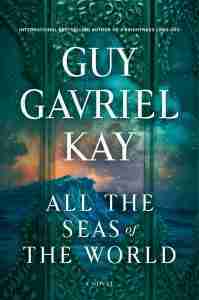 All The Seas of The World follows a merchant (and sometimes corsair) named Rafel and his associate and friend Nadia as they are hired by an affluent pair of brothers to assassinate the Khalif of Abeneven. From there, the fate of the two main characters drastically changes as well as the fate of the known world due to this ploy for power. For all of the political machinations and historical relevance this story holds, it is the two central characters that shine through and carry the novel forward. Beyond them, there are some returning characters from Kay’s previous two novels, most notably Danio and Folco, with the latter playing a very integral role in the plot of this story. This being said, All The Seas of The World can still be read as a stand-alone novel. There are also some nice nods to Kay’s other works which share the same world, particularly The Lions of Al-Rassan.
All The Seas of The World follows a merchant (and sometimes corsair) named Rafel and his associate and friend Nadia as they are hired by an affluent pair of brothers to assassinate the Khalif of Abeneven. From there, the fate of the two main characters drastically changes as well as the fate of the known world due to this ploy for power. For all of the political machinations and historical relevance this story holds, it is the two central characters that shine through and carry the novel forward. Beyond them, there are some returning characters from Kay’s previous two novels, most notably Danio and Folco, with the latter playing a very integral role in the plot of this story. This being said, All The Seas of The World can still be read as a stand-alone novel. There are also some nice nods to Kay’s other works which share the same world, particularly The Lions of Al-Rassan.
“We are marked by what we have experienced young, some of us more than others.”
All The Seas of The World is a novel that takes its time. It is equal parts ponderous and beautiful. The prose is filled with borderline-poetic lines that question the capricious nature of fate, faith, and the connections we make. In terms of theme, it is the dark tether of exile that is the focal point of this story and the unifying factor that connects many of the characters in the novel. The feeling of losing a part of oneself, a home that can never be returned to, connects characters from across faiths and countries in All The Seas of The World. This does not hold back the violence that ensues when characters and countries do clash, but the bond of loss connects even those who are opposed.
“We do not always receive kindness in life, or in the memories carried of us after our dying. Unless it is from the god we worship, which is a matter of longing and desire. Never certainty.”
All The Seas of The World plays out like a historical fiction novel that has been given just a small dose of fantasy, which I quite enjoy but may not be to everyone’s taste. Guy Gavriel Kay writes fantasy in a way that no one else does, which may make him one of your absolute favorite authors, or you may not care for his books at all. I stand in the former camp, as this is the seventh book I’ve read by him, and I don’t plan on stopping anytime soon. All The Seas of The World gets a well-deserved 5 stars.
Read All The Seas of The World by Guy Gavriel KayThe post REVIEW: All The Seas of The World by Guy Gavriel Kay appeared first on Grimdark Magazine.
July 31, 2022
REVIEW: Control
“It will happen again in a town called Ordinary.” These were words spoken in reverse in the theme song of American Nightmare, the semi-official sequel to Alan Wake. It was meant to set up Alan Wake 2, which would take place in a town called Ordinary. Unfortunately, the disappointing sales of Alan Wake combined with other matters prevented us from ever discovering what was going to happen in Ordinary–until now.
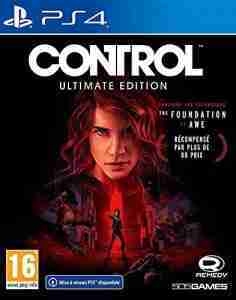 Control is a stealth sequel to Alan Wake where you take the role of Jesse Faden, a young woman who has tracked down the mysterious Federal Bureau of Control that kidnapped her brother a decade earlier. Discovering no one at the front doors or, indeed, anywhere, she proceeds to investigate and ends up discovering the dead body of its director. Jesse picks up a mysterious gun by the corpse and unwittingly inherits leadership of the FBC. She also discovers the headquarters, called the Oldest House, is eldritch location that would give R’lyeh a run for its money.
Control is a stealth sequel to Alan Wake where you take the role of Jesse Faden, a young woman who has tracked down the mysterious Federal Bureau of Control that kidnapped her brother a decade earlier. Discovering no one at the front doors or, indeed, anywhere, she proceeds to investigate and ends up discovering the dead body of its director. Jesse picks up a mysterious gun by the corpse and unwittingly inherits leadership of the FBC. She also discovers the headquarters, called the Oldest House, is eldritch location that would give R’lyeh a run for its money.
Unfortunately, the FBC is having the worst day in its seventy-year-history with an extradimensional noise called the Hiss possessing large numbers of the staff before turning them into aggressive zombie-like monsters that can still use guns. A handful of the employees are still alive and all of them instinctively recognize Jesse as their new leader. Jesse is both annoyed and intrigued by this since she planned to bust out her brother from these people, not save them from a parasitic noise.
Jesse finds herself running from place to place, doing errands for her employees that are justified by the fact they’re mostly terrified researchers and she not only has a magic gun but soon develops powerful telekinetic abilities by draining the artifacts the Bureau of Control keeps on lockdown. Some of them are unhelpful to her quest to free her brother while others are genuinely shocked at the idea they’ve been keeping someone prisoner for seventeen years.
The purpose of the game is to eventually unlock all of the secret doors and passageways through the Oldest House as well as solve the mystery of the Hiss before shutting them out of this dimension. You also find out what happened to Dylan Faden right before it gets ridiculous that Jesse keeps putting it off. I have some complaints about the ending (see below) but it is, overall, a truly fantastic game.
Gameplay-wise it’s a third person shooter with psychic abilities. Jesse fights hundreds of Hiss throughout the corridors of the Oldest House. You can shoot them, throw rocks at them, levitate to do either, or dash past them. It’s a surprisingly entertaining gameplay loop and serviceable enough that I barely noticed the enemy variety is pretty weak. There are some great bosses in the game like the Pacman-like Anchor, essJ, and FORMER but these really should have been part of the main story rather than sidequests. I also note the game lacks a final boss, when they had a perfectly good one already programmed with essJ or someone programmed with her powers.
The game possesses a surprisingly versatile customization system with the option of basically activating cheat codes alongside the power to customize the difficulty along a slider. Jesse can become all but bullet-proof, unlimited energy, invincible, or one-shot kills with no judgement. It almost makes up for the absence of a New Game+ mode that I would have really appreciated given my maximized levels of powers that I had nothing to use on at the end.
The Oldest House is an excellent example of “less is more” in terms of its graphics. The Oldest House looks like an old-style Seventies or Eighties government building with pneumatic tubes, carpeting, and green screen computers. Then things go “off” like the piping that leads to a massive nuclear power plant, sewer filled with humungous sentient clogs, and alien rock quarries in the basement that lead to alien vistas. Jesse Faden is a beautiful protagonist and while she’s a bit emotionally closed off, Courtney Hope does a fantastic job with her acting.
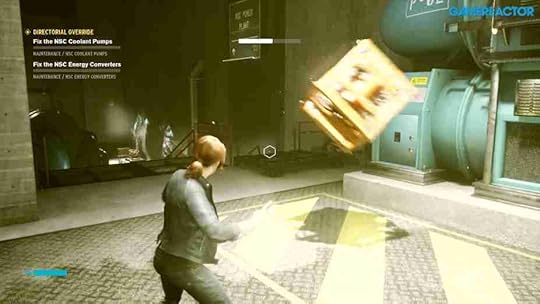
Control is basically adaptation of the SCP Foundation. Those unfamiliar with that is it is an online project where people write stories about weird and inexplicable objects that are investigated by an X-Files like organization that contains them to protect the public. Control barely hides its influences with many of the materials you can pick up being similar to the reports you can see on the wiki like a rubber duck that follows you or a fridge that will kill you if you look away. It also combines elements of Twin Peaks and Remedy‘s other games, which I heartily approve of.
Control’s nods to Alan Wake and it’s continuity also get an informal sequel in one of its two DLC that I recommend playing as essential parts of the game. We find out what Alan has been up to since the events of American Nightmare and how he possibly ties in to all the events of Control. You don’t have to play Alan Wake to enjoy the game but it’s an awesome game so I recommend you pick up Alan Wake Remastered after you finish it if you haven’t.
Play ControlThe post REVIEW: Control appeared first on Grimdark Magazine.
July 29, 2022
REVIEW: The Warrior by Stephen Aryan
The great triumph of Stephen Aryan’s The Coward (Quest for Heroes, #1) was in exploring the idea that heroes don’t exist, but that ordinary people can commit heroic deeds. The Warrior continues in this line while introducing new character POVs, a brand new quest with impossible odds, and a whole new harsh environment to struggle through in the process. If you enjoyed The Coward’s mashup of fantasy tropes and genres then The Warrior will continue to delight, and perhaps even surprise you.
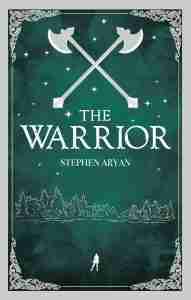 Last summer, we were introduced to Kell Kressia, a man who was mistaken for a hero and sent on a quest to save the world from the terrible Ice Lich in the far Frozen North – and not for the first time. The Warrior picks up two years after he returned victorious and finds Kell stagnating: having been married off to Sigrid, and now appointed King, when he’d rather have gone back to his quiet life on the farm. Offering him a timely escape, comes Willow, who returns to ask Kell to fulfil his promise and aid her in saving her people, the Alfár, and her homeland from an infection called The Malice. Practically leaping at the chance for another quest and a bit of adventure, Kell agrees and sets off immediately, backed up only by two of the King’s elite Raven Guard to assist, Odd and Yarra, while leaving Sigrid behind to rule and deal with the machinations of Reverend Mother Britak (oh yes, she’s still knocking about).
Last summer, we were introduced to Kell Kressia, a man who was mistaken for a hero and sent on a quest to save the world from the terrible Ice Lich in the far Frozen North – and not for the first time. The Warrior picks up two years after he returned victorious and finds Kell stagnating: having been married off to Sigrid, and now appointed King, when he’d rather have gone back to his quiet life on the farm. Offering him a timely escape, comes Willow, who returns to ask Kell to fulfil his promise and aid her in saving her people, the Alfár, and her homeland from an infection called The Malice. Practically leaping at the chance for another quest and a bit of adventure, Kell agrees and sets off immediately, backed up only by two of the King’s elite Raven Guard to assist, Odd and Yarra, while leaving Sigrid behind to rule and deal with the machinations of Reverend Mother Britak (oh yes, she’s still knocking about).
As their quest begins, Willow explains that The Malice will affect them all and cause their minds to betray them. Her hope is that, as humans, it will act slower than in herself and Kell can keep her focussed on their objectives long enough to see them through. They are chasing after Willow’s kinsman Ravvi, who is intent on enacting a blood ritual as a last-ditch attempt to halt The Malice and save their land. Willow is convinced this will end in disaster. The further our intrepid four travel into Alfár territory the more they become haunted and changed as The Malice works to twist their memories and fears against them.
Back in Algany, Sigrid finds herself in evermore dire circumstances as Kell’s return is cast into deeper and deeper doubt. The Reverend Mother is intent on her Holy War to unite the Five Kingdoms under her church, but Sigrid has learned the truth about Kell’s last journey north and startling revelations about the Shepherd and the religion built up around him that Britak champions.
Swapping POVs between Kell, Odd, Yarra and Sigrid allows us to follow two main storylines at once without it becoming overbearing or confusing. What’s more, Stephen Aryan has employed some interesting mechanisms in his worldbuilding to progress these two different sets of events in a superbly effective way. As much as I want to explain more on this, it’s something you’ll have to read The Warrior to figure out. No spoilers here!
We see tragedy, darkness, and gruesome outcomes throughout both sides of The Warrior’s story. My only slight criticism is that some people may find themselves wanting the characters’ development to be paced out a little slower, however, that shouldn’t be considered a deal-breaker and if you’ve read The Coward already, it is well worth finishing off the duology.
The Warrior is a compelling novel that successfully mixes the high stakes, poor odds quest with introspective characters and a clever split time-line. Once you finish, you’ll find yourself wanting more tales from this world. With themes of heroism, redemption, and transformation, The Warrior builds on the successes of The Coward and adds its own twists along the way.
With thanks to Angry Robot for an Advanced Review Copy of The Warrior for this review.
4/5 Stars
Read The Warrior by Stephen AryanThe post REVIEW: The Warrior by Stephen Aryan appeared first on Grimdark Magazine.
REVIEW: Lute by Jennifer Thorne
Lute is an understated masterpiece of folk horror by Jennifer Thorne, an exceptionally talented new voice in the genre. The small British island of Lute is both blessed and cursed. Its inhabitants experience lives filled with good health and free of tragedy, even during a time of war. But this good fortune requires sacrifice: every seventh year on the summer solstice, the island takes the lives of seven people. This cycle of seven years of peace and prosperity followed by a single day of sacrifice has occurred for centuries. As the aristocratic caretakers of the island, the Treadway family bears an especially large responsibility for maintaining this balance.
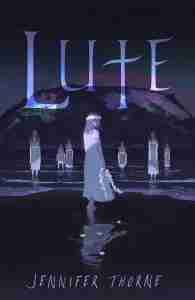 Lute is told as a first-person narrative by Nina, a young Floridian who has left her academic life behind to wed Lord Hugh Treadway, whom she met on a cruise with her grandmother. As the newly minted Lady Treadway, Nina grapples with settling into her new life on Lute while also bringing a natural skepticism toward the legends of the island. As an American, Nina’s assimilation on Lute is made especially difficult due to the global political situation, where the United States has allied with Russia on the wrong side of a new world war. Now, after seven years on the island and with two young children, Nina is about to experience her first day of ritualistic sacrifice.
Lute is told as a first-person narrative by Nina, a young Floridian who has left her academic life behind to wed Lord Hugh Treadway, whom she met on a cruise with her grandmother. As the newly minted Lady Treadway, Nina grapples with settling into her new life on Lute while also bringing a natural skepticism toward the legends of the island. As an American, Nina’s assimilation on Lute is made especially difficult due to the global political situation, where the United States has allied with Russia on the wrong side of a new world war. Now, after seven years on the island and with two young children, Nina is about to experience her first day of ritualistic sacrifice.
Nina both embodies and upends the well-worn trope of oblivious Americans experiencing a clash of cultures in historic, aristocratic Europe. This has been the subject of classic works by Mark Twain (The Innocents Abroad, A Connecticut Yankee in King Arthur’s Court), Henry James (Daisy Miller, The Ambassadors), Nathaniel Hawthorne (The Marble Faun), and many others. Jennifer Thorne’s specific use of this motif in Lute echoes that of Oscar Wilde in The Canterville Ghost, but with Wilde’s trademark humor replaced by a pervasive sense of foreboding.
Thorne adds layer upon layer of depth to Nina’s character as this familiar archetype is taken in unexpected new directions. Although she puts on a confident exterior, Nina is full of self-doubt and never experiences a sense of home, even in her native Florida. Part of the joy of reading Lute is seeing how Nina develops a genuine feeling of belonging on this ancient island, and how the island, in turn, adopts Nina as one of its own.
Lord Treadway is another intricately drawn character who develops in startling new directions. Grimdark enthusiasts will especially appreciate his gray morality as he grapples with his personal role on this brutal day of sacrifice. Jennifer Thorne brilliantly juxtaposes the character arcs of the Lord and Lady of Lute over the course of the novel.
Part of the genius of Lute is seeing how this close-knit community reacts to unavoidable tragedy. We see characters experiencing all stages of grief, culminating with the acceptance of their fate as they understand the necessity of honoring their bargain with the island. In its own perverse way, this tragic day of sacrifice both tears apart and brings together this ancient community.
Jennifer Thorne’s prose is elegant in its simplicity, embracing a quiet minimalism that only enhances its sense of horror. Lute is a stunning achievement for an author new to the genre. This is the type of novel that will haunt you for years to come.
5/5
Read Lute by Jennifer ThorneThe post REVIEW: Lute by Jennifer Thorne appeared first on Grimdark Magazine.
July 28, 2022
REVIEW: Kill Zone by Damir Salkovic
Chop up (or dice) your VHS copy of The Running Man, and put it in a blender with a cup and a half of Soylent Green. Top it off with a dash of either Hunger Games or Atlas Shrugged (depending solely on the contents of your pantry) and pulse until you have a purée of Kill Zone by Damir Salkovic.
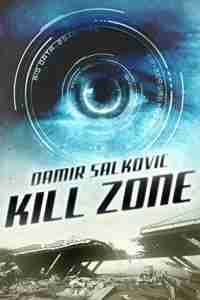 Set in a highly dystopian world, Kill Zone plunges the reader into a reality TV war zone. We find Frank Clayton and his comrades in a real life or death situation, charging through a landscape of bombed out buildings, dodging enemy fire and struggling to make it to the commercial break alive. What happens if you don’t make it? Well, the stage hands put you out of your misery (if you’re still alive but can’t walk to the next staging area), chop you up, and make a soup out of your body. Then they feed it to the survivors. Which seems downright inhumane until you learn that it’s common knowledge, and a lot of the contestants signed up for this nightmare just so they’d have something to eat.
Set in a highly dystopian world, Kill Zone plunges the reader into a reality TV war zone. We find Frank Clayton and his comrades in a real life or death situation, charging through a landscape of bombed out buildings, dodging enemy fire and struggling to make it to the commercial break alive. What happens if you don’t make it? Well, the stage hands put you out of your misery (if you’re still alive but can’t walk to the next staging area), chop you up, and make a soup out of your body. Then they feed it to the survivors. Which seems downright inhumane until you learn that it’s common knowledge, and a lot of the contestants signed up for this nightmare just so they’d have something to eat.
As a forty eight year old dude who is out of shape and who has been divorced twice, I’d just like to say that I especially liked Frank Clayton as a hero. I felt like we were on the same wavelength. Frank tries hard, but his body isn’t quite what it once was, and life has taken its toll on his emotional well-being. He’s doing his best, but it’s obvious his best isn’t going to get him through this impossible situation. Except, somehow, luckily, it does.
Kill Zone quickly warps from fake war reality TV, to a Mad Max-esque trek across the broken landscape of a world that is sinking slowly into an apocalypse. Frank’s escape from the televised theater of operations leads him through the various levels of the new social order, from scavengers and cannibals to the last bastions of civilization in the city he initially ran away from. We discover Frank’s goals as he does throughout the story. He morphs from a broken man, purely going through the motions because some primal instinct won’t let him lay down and die, to a man who finds himself in the awkward position of actually being able to make some positive change in a dismal world. Watching him discover himself, his goals, and his mission is fascinating.
Damir Salkovic creates a world where there is little hope, and one’s station in life can change before you’re aware of it. His vision of earth slowly sinking below the tides, and turning to desert anywhere that isn’t underwater is both heartbreaking and plausible.
Kill Zone might be a blend of several other stories, but it’s a great blend, like sriracha and mayonnaise, or peanut butter and chocolate.
Read Kill Zone by Damir Salkovic
The post REVIEW: Kill Zone by Damir Salkovic appeared first on Grimdark Magazine.
July 27, 2022
An interview with Chris Panatier
Chris Panatier’s new novel, Stringers toes the line between intellectual science fiction and bat-shit crazy fun. It also features one of the best friendship duos akin to Sam and Frodo.
Chris is someone I have looked forward to chatting with since his debut novel, The Phlebotomist. And I wasn’t disappointed; he is a fascinating man with his hand in many pies: lawyer, artist, and author.
 Check out the below conversation that Chris and I had via email.
Check out the below conversation that Chris and I had via email.
[GdM] Hey Chris, thank you so much for taking the time to interview with us!
[CP] Thank you so much for having me, Beth. What a treat!
[GdM] You are a lawyer by day, an author of some wildly cool science fiction, and an artist of album covers. What attracted you to law as your day job? How did both being an author and an artist start?
[CP] I have a bit of a reverse story from a lot of writers, I suppose. Most would-be authors I hear seemed to know they were going to write early on. Not me. I was too lazy for that. I had to write a 30-page paper in my third year of law school and considered it a great affront that anyone would be required to put down so many words. So, long story short, my desire to be a trial lawyer came pretty early and I’ve done that for twenty years. I like to find the story in the case, then speak it to juries with an aim to holding companies responsible for doing bad things to people.
As for art, that started in childhood, but (due to laziness) I didn’t really get serious until around 2007 when I started trying to draw album art and bands started to find me.
Writing hit me like a bolt of lightning. In 2015 I was struck by the desire to write a novel—probably because it suddenly dawned on me that the marriage of writing a story and a reader reading that story is this very magical thing. That you can write words that lots of people will read in the same order, but the story as it manifests in one reader’s mind will never look like it looks in somebody else’s brain. There was a beauty to that idea I couldn’t shake. After that, I started writing. Badly. But I wrote every single day for years until my work began to find homes.
[GdM] Is there a story that was very influential for you? If so, how?
[CP] I think it depends on the day and influential in what way, you know? But on this day, the stories that comes to mind are some that my mother read to me when I was very young. A Wrinkle in Time fascinated me. I think maybe that planted the little seed that hatched so many years later. As for modern stories, Annihilation by Jeff Vandermeer has been something I’ve aspired to in terms of pure beauty and story execution. Ask me tomorrow and get a different answer!
[GdM] I read on an AMA you did a few years ago that you furiously wrote The Phlebotomist in 70 days. The story was at the forefront of your mind. Did you have the same sort of burst of writing with Stringers?
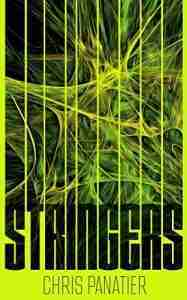 [CP] Stringers came in two parts. I’d actually begun the book that became Stringers first. I remember that the early version of it was kind of fizzling out on me. I put it down and wrote The Phlebotomist. When I resurrected Stringers two years later, I got the first draft done in three months. Sometimes all you need is time.
[CP] Stringers came in two parts. I’d actually begun the book that became Stringers first. I remember that the early version of it was kind of fizzling out on me. I put it down and wrote The Phlebotomist. When I resurrected Stringers two years later, I got the first draft done in three months. Sometimes all you need is time.
[GdM] You released The Phlebotomist in the middle of the pandemic and released Stringers recently. Has anything changed between releasing your first book and now your second?
[CP] It definitely sucked super hard to have a debut come out when it did. On the other hand, my publisher, Angry Robot, was so supportive and organized lots of on-line events for me and other writers. I have enjoyed being able to do in-person events now in support of both books. Most of the time I feel like a little cave dweller yearning for human contact, so I try to get to any events I can. Readings, cons, what have you.
[GdM] You are both an artist and a writer. Each of these disciplines requires different parts of your creative faculties. But process-wise, would you say that you approach both similarly? For instance, if you are a pantser, do you go into an art piece and create whatever feels right at the time? Or do you have a set of criteria that you want to hit?
[CP] Great question! The longer I write, the more the two crafts seem the same to me. It may be different for others who do both things, but for me I never know what I’m really working with until I start writing/sketching. I may have a broad idea, such as a premise in writing or a compositional structure in drawing/painting, but I usually just need to start and see where the art takes me. Pantsing in both endeavors is a process of discovery for me. Before I ink a drawing I’ve probably sketched and redrawn aspects of the piece dozens of times. Same goes for writing. Leave what works, bin the rest.
Another interesting thing I’ve noticed is that art and stories come together in much the same way—both paintings and books go through an ugly phase and you just have to remember that more often than not, you do come through on the other side!
[GdM] What are some album covers or art pieces that you genuinely admire, and why?
[CP] There is so much good album art. I’m hugely inspired by anything John Baizley has done. Some of my favorite work by him is the cover of Skeleton Witch’s Beyond the Permafrost album and Pig Destroyer’s Phantom Limb. Also, anything Pushead did for Metallica. Love the painterly stuff by Adam Burke, who did the cover for Vektor’s Terminal Redux. Just off the top of my head. What these all have in common is some type of trapped energy that seems ready to leap off the page in addition to nice composition and linework (if pen is involved). I’m a sucker for pretty lines.
[GdM] Speaking of Album covers, I bought your Full Metal Coloring book about a year ago. It is gorgeous. When will we see another coloring book from you?
[CP] Oh, I’m so glad you like it! I’ve actually got more than enough art to do a second coloring book, but I wanted to make it available in a larger format. My agent (Sara Megibow) recently submitted a proposal for a new coloring book to a few places. Cross your fingers!
[GdM] I read that you drew the anatomical heart on the cover of The Phlebotomist. Is that true? How did the cover design process go for that book? The cover is very cool and distinctive.
[CP] That is a true fact! It was a very collaborative process. I told Angry Robot that I wanted to have a hot pink cover (to match my protagonist’s hair). They came up with the medical illustration theme and had a few possible centerpieces done in that style. Pen and ink is something that I have a lot of confidence in, and so I asked them if I could draw the center image. They said ‘go for it’ and that was that!
[GdM] The covers for Stringers is also amazing. Did you have a hand in Stringers as you did with The Phlebotomist?
[CP] I had a lot of input, and we even played with the idea of my doing a cover for it. I actually painted a giant spaceship with oils but we later decided it didn’t really do the job we wanted for the cover. The concept that made it to the front was mine, and the brilliant execution was the work of AR’s graphic designer Kieryn Tyler. I absolutely love what she did.
By the way, the spaceship made it onto the book. If you look at the spine, you’ll see a very tiny image at the top. Hahaha!
[GdM] How did you shape your protagonists, Willa and Ben, in The Phlebotomist and Stringers? Was there a starting point, an idea that you worked from? Or did you build the story first, and the protagonists developed organically?
[CP] Another great question! I have a tough time developing characters outside the confines of the story. With most of mine, I know little more than their circumstance and primary motives before I begin writing. They gain layers of flesh as the story goes on. In my experience, characters are truly defined by their decisions. So putting them into the story is key for me. All I knew about Willa, for instance, was that she’d be older (only because the phlebotomists I’d encountered were older) and that she would be employed by the company at the center of the book’s conflict
[GdM] Can you tell us a bit about Stringers?
[CP] No spoiler version: Ben has a lot of knowledge but doesn’t know why. He’s an encyclopedia of natural sciences (with a focus on bug sex), antique watches, and the Chime—though he can’t say what the Chime actually is. Unfortunately for Ben (and his best and only friend, Patton) there are people in the galaxy who do know what the Chime is, and obtaining it is very important. Naturally, Ben and Patton are abducted. It devolves from there.
[GdM] Stringers has a ton of crazy humor, often involving a jar of pickles. How fun was writing all of the shenanigans?
[CP] An absolute joy. I had every bit of it in my mind’s eye and it unfolded like a comedy film. I admit I laugh at my own shit. I’d love to see this book on the screen at some point because I truly think people would need supplemental oxygen from all that happens to our “heroes”.
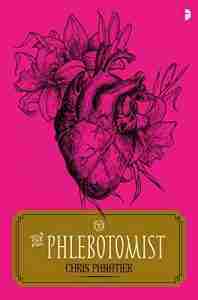 [GdM] Also, what made you choose the sex life of animals and watches for Ben’s unique pool of knowledge?
[GdM] Also, what made you choose the sex life of animals and watches for Ben’s unique pool of knowledge?
[CP] I needed something that seemed entirely random but was still engaging. Here, engaging meant humor + strange facts that could keep the reader involved as they plow through the footnotes that symbolize the many intrusions of poor Ben’s asshole brain.
[GdM] What are some deep intellectual dives you went down in research for Stringers? What is the coolest thing you learned? You had to have discovered a lifetime of information about insects.
[CP] The deepest dive I went on had nothing to do with bugs or animals at all, actually. It was in trying to develop a plausible, but original, faster-than-light travel device. I watched hours and hours of videos on particle entanglement in order to get a basic understanding of the science to then bastardize it into the mechanism for Naecia’s “Switch Drive”. The bug stuff was fun and amazing, but for me the exploration of actual physics was more rewarding. Doesn’t mean I won’t regale people with facts about head-fucking snails at parties.
[GdM] Would you say that Patton is Ben Sullivan’s Samwise Gamgee? I think we could all use someone like Patton in our lives.
[CP] Wow, I hadn’t seen that comparison yet. It’s shockingly apt! For both Patton and Ben. Because Frodo—like Ben—could be a selfish asshole, and Sam stuck by him.
[GdM] What is next for you?
[CP] I have a dark fantasy manuscript with my agent and some beta readers right now. It’s nothing like my prior two books (I guess that’s becoming a theme!). Tough to describe, it’s sort of Monsters Inc, + Wizard of Oz + The Exorcist. I’m very excited about it.
Thanks so much for having me!
Read Stringers by Chris PanatierThe post An interview with Chris Panatier appeared first on Grimdark Magazine.
July 26, 2022
REVIEW: Those Below by Daniel Polansky
Following on from the epic book one of this duology, Those Above, Daniel Polansky closes out this amazing series in barnstorming and bloody fashion. Those Below focusses on humankind’s attempt to topple the four-fingered, god-like ruling class, and the ethics of the people and methods used in the machinations of overthrow. Much like the first book, Those Below has everything a grimdark fantasy fan wants in spades.
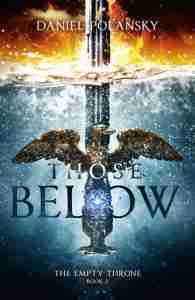 Some spoilers for Those Above follow.
Some spoilers for Those Above follow.
In the Roost, Seed is a destitute fifth rung boy with one eye facing down his enemy, the man he hates to his core: Thistle. But Thistle is no longer Thistle. He has moved beyond the petty gang fighting and killing that kept humankind down. He is Pyre, and he now holds a sword for humanity—for their coming uprising. Meanwhile, in the Commonwealth, Eudokia drives her propaganda machine, pushing her mighty forces into the Salucian homeland to expand her borders, and her eyes ever on what few humans have ever dreamed of taking before. Calla, seneschal to the eternal The Aubade, is on a dangerous mission from the luxury and safety of the First Rung, down to the Fifth where she first experiences the horrors of her species. Bas, the only living man to have slain an eternal in on-on-one combat sits at the borders of the Commonwealth waiting on the permission of humankind’s four fingered god like overlords to do what Bas does best.
Those Below focusses on the lengths people will go to in order to free themselves from servitude, poverty, and misery, and also the blind eye (or outright opposition) people will turn on those in need when they are in a position of privilege or too frozen with fear to suffer change. It is a story that really hits on what it is to be human in all of the shades of grey that we exist in. And in these themes, we find the types of characters and stories that grimdark fans revel in.
Something that I love about Polansky’s series is his willingness to kill off characters–whether it be on-screen or off-screen (let’s remember that not every character needs a drawn out heroic or gruesome on-page death when your POVs are in the madness of a city being sacked). There is one amazing character death scene that massively nails this story down as an allegory for the overthrow of the American one percent, and I loved this book all the more for it.
Polansky’s closing to this duology features it all: amazing battles, the fall of the great and small, and the unpeeling of layers of people as their world either comes apart or all their dreams come to horrible fruition. The author has done an amazing job in bringing all the storylines together through a series of jaded, gritty points of view.
A colossally sad, morose, and so very human ending to a beautiful story, Those Below is a book grimdark fans will enjoy. Having read this and The Builders, and his story for The King Must Fall, Polansky is very quickly pushing his way up my favourite authors list.
4.5/5
Read Those Below by Daniel PolanskyThe post REVIEW: Those Below by Daniel Polansky appeared first on Grimdark Magazine.
July 25, 2022
REVIEW: White Horse by Erika T. Wurth
White Horse is a haunting, emotional mystery centered around Native American history and lore. Interwoven with equal threads of real life struggles and the supernatural, White Horse is full of intrigue, dark and dangerous turns, and the gutting reality of the devastating secrets our families are capable of keeping from us. Erika T. Wurth’s characters are brutally real, honest, and often make mistakes we can see ourselves making. White Horse takes place in Colorado, where Kari, an Indigenous woman, has her usual life of nicotine, beer, and dive bars interrupted by the unearthing of a family artifact that forces her to come to terms with secrets she buried long ago. Suddenly burdened by the constant appearance of actual ghosts from her unknown past, Kari is put in a position where she has to not only face her darkest, most traumatic memories, but also unearth the true horrors of what happened to her long ago. Filled with Native myth and legend, nightmarish ghosts and boogeymen, and complicated family ties, White Horse has one of the most compelling hooks I’ve seen in a while.
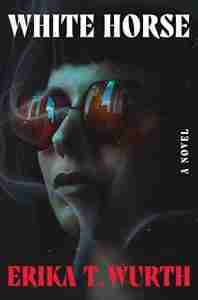 This book’s strength lies in its utterly raw and real portrayal of human life, specifically Indigenous life in Colorado. The story, the details, the grit of this novel are still sticking with me, partially because of the painful human nature of the story, which comes from the author’s ability to write characters so firmly rooted in reality. Wurth’s characters in White Horse are so real and understandable that they nearly come off the page. From the supporting characters to Kari herself, these people felt real, honest, and completely flawed in the way all human beings are. Kari’s nuclear family is fractured and broken, her fast-paced life lived nearly completely alone after the death of her most beloved friend in her youth. This woman, a stubborn metal-head bartender, was everything I look for in a main character. Nearly anyone will be able to sympathize with her, or any other character in the story. Kari’s constant references to rock and heavy metal bands, coupled with her habit of praying to Dave Mustaine instead of God, sunk into my heart. With real-world references to pop culture, famous literature, and bands we all know and love around every corner, White Horse walks the line between reality and fiction quite well.
This book’s strength lies in its utterly raw and real portrayal of human life, specifically Indigenous life in Colorado. The story, the details, the grit of this novel are still sticking with me, partially because of the painful human nature of the story, which comes from the author’s ability to write characters so firmly rooted in reality. Wurth’s characters in White Horse are so real and understandable that they nearly come off the page. From the supporting characters to Kari herself, these people felt real, honest, and completely flawed in the way all human beings are. Kari’s nuclear family is fractured and broken, her fast-paced life lived nearly completely alone after the death of her most beloved friend in her youth. This woman, a stubborn metal-head bartender, was everything I look for in a main character. Nearly anyone will be able to sympathize with her, or any other character in the story. Kari’s constant references to rock and heavy metal bands, coupled with her habit of praying to Dave Mustaine instead of God, sunk into my heart. With real-world references to pop culture, famous literature, and bands we all know and love around every corner, White Horse walks the line between reality and fiction quite well.
White Horse does a fabulous job of depicting the complexity of Indigenous life in modern day America, while still at its core being a horror-fantasy novel that fits well into it’s genre. Throughout the story, we not only watch Kari’s mental standing deteriorate as the ghosts of her past continue to torment her, but we also get to see a Native woman rise shamelessly to her power through the magic of her heritage. Without spoiling the ending, this story will stick with me for a while, not because it was an excellently spooky ghost story but because it was, at its heart, a story about people. Families. The way we tear each other apart, and the strength of our friendships and connections.
Read White Horse by Erika T. WurthThe post REVIEW: White Horse by Erika T. Wurth appeared first on Grimdark Magazine.
The cover for Clayton Snyder’s new science fantasy romp: Blackthorne
Do I love a good cover reveal! Clayton Snyder is an author the Grimdark Magazine team know and love. We’ve reviewed a decent stack of his books (Thieve’s War, River of Thieves, and Norylska Groans) and well as published one of his brilliant short stories in Issue #30. Norylska Groans also made our best books of 2021 list. So when Snyder approached GdM to co-host the cover release for his his new book Blackthorne we of course jumped at the opportunity. And it’s an absolute beauty!
About BlackthorneFramed for a crime he didn’t commit. Haunted by the ghosts of his past. Incarcerated in the most notorious prison in the Freeholds. Fate has mauled Mattias Temple, a failed cadre necromancer, leaving
him with little hope.
Until a rogue military squad kidnaps the governor and threatens the city with a magical plague, giving him a shot to redeem a lifetime of mistakes and be the one thing he never thought possible: A hero.
As the body count rises Mattias finds himself neck-deep in trouble and drowning in ghosts. Outnumbered and outgunned, he has one choice left: Cut a bloody swathe through his enemies or die trying.
Blackthorne Cover

Clayton Snyder is the co-author of SPFBO finalist Norylska Groans, which Anthony Ryan (Blood Song) described as “Rich in bone crunching violence and a grimly convincing sense of place and character.” Michael R. Fletcher (Beyond Redemption) called Obsidian Psalm “Dark, visceral and unflinching.” Several of Snyder’s other novels have been SPFBO semi-finalists. Snyder has also authored numerous short stories, his most recent, Injustice, at Three Crows Magazine, which has been compared to Gene Wolfe’s work. He currently splits my time between work and writing. He has worked as a systems admin, chainsaw operator, and once did an ill-advised stint as a bodyguard because he is ‘really tall’.
The post The cover for Clayton Snyder’s new science fantasy romp: Blackthorne appeared first on Grimdark Magazine.



